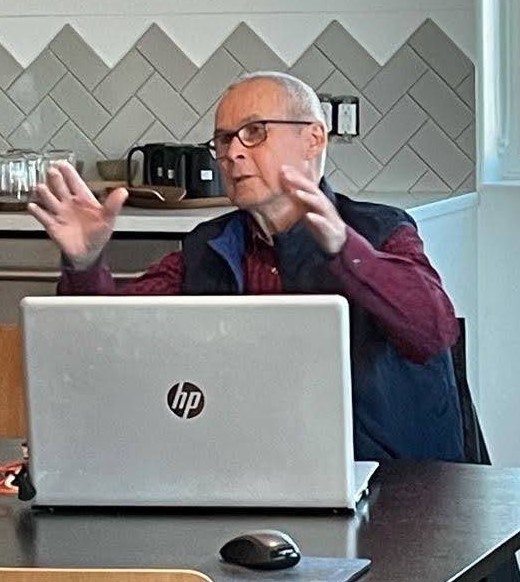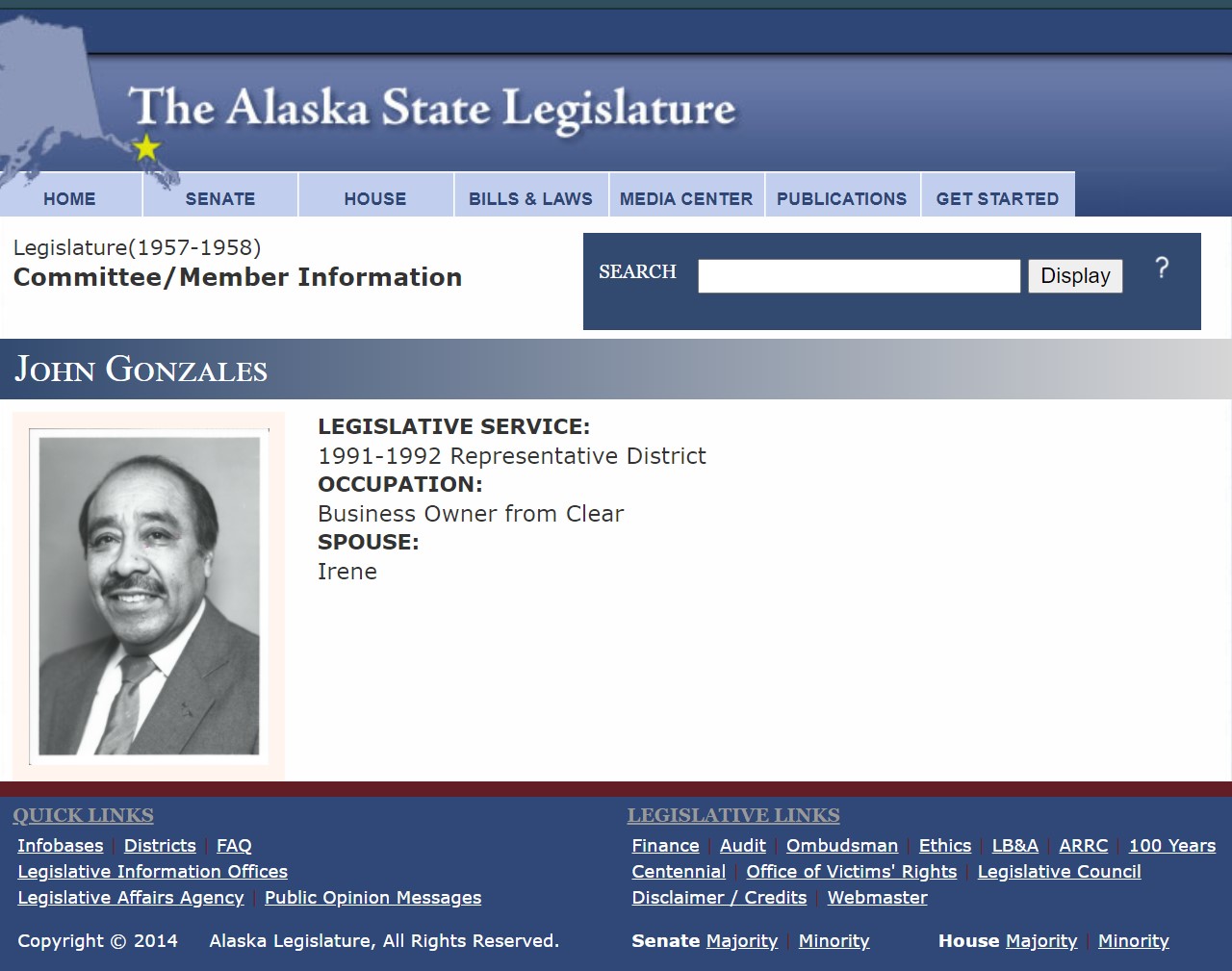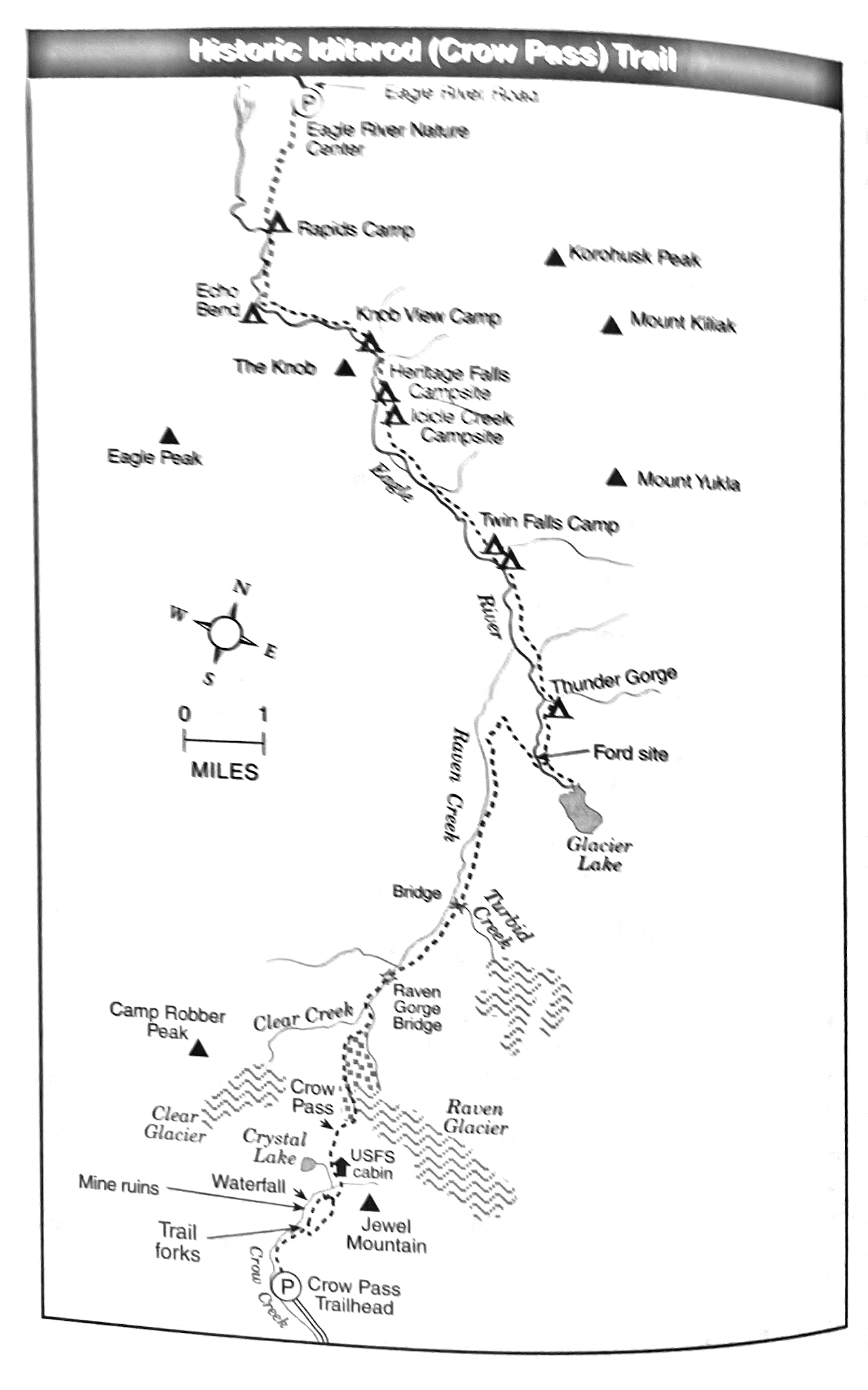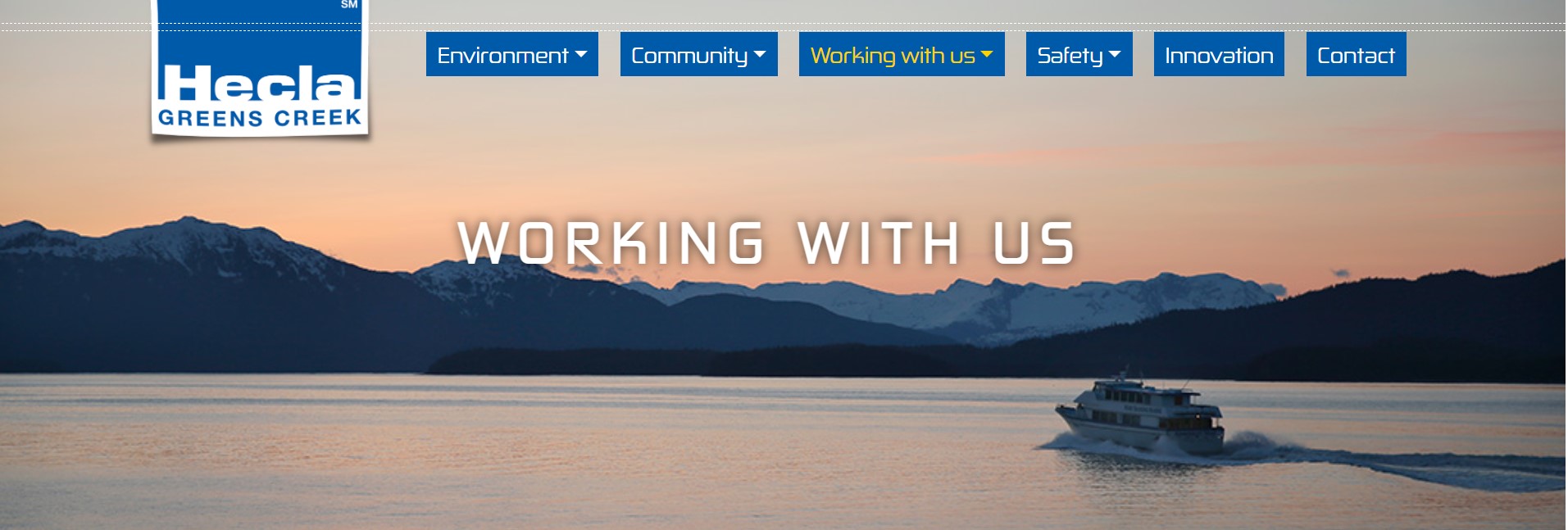 |
| Edgar Blatchford, a born-again Democrat, spoke to EaglExit recently about how local government can be formed or changed and opportunities to consider. (Photo by Waneta Borden) |
It’s a mean world. Big fish eat little fish and bullies often get their way. Russian traders came to Alaska to enslave the Natives and decimate bountiful fur seals and sea otters. Nobody could stop them. When Alaska was purchased by the United States in 1867, it was to realize Alaska’s resource bounty.
Alaska became inhabited primarily by westerners and before long they wanted statehood–to have control over the conclusion of Manifest Destiny.[1]
From the time Alaska became a territory in 1914 to the time it became a state in 1959 the big corporations that paid nothing to the people of Alaska exercised control, explained University of Alaska Professor Edgar Blatchford, April 13, 2021, speaking to a group of people involved with the effort to detach Assembly District 2 (AD2) from Anchorage. With statehood we said we wanted the power to tax if we needed to tax rather than development interests paying nothing for what they took.
In other words, standing up to Local Government special interest bullies.
Blatchford is an authority on Alaska local government, having served as Commissioner of the Department of Community and Regional Affairs under two governors back when he was a Republican. He was born in Nome and began his political career as Mayor of Seward.[2]
 |
| Check out the EaglExit webpage: EaglExit.com |
From the Alaska Constitution:
Section 2. Source of Government
All political power is inherent in the people. All government originates with the people, is founded upon their will only, and is instituted solely for the good of the people as a whole.
The whole idea of local government is to control, explained Blatchford. And the Alaska Constitution provides for “maximum local autonomy”.
Article X, Section 1. Purpose and Construction
The purpose of this article is to provide for maximum local self-government with a minimum of local government units, and to prevent duplication of tax-levying jurisdictions. A liberal construction shall be given to the powers of local govern-ment units.
During this freewheeling discussion last month, Blatchford cited a number of instances where communities established Borough governments or worked to opt out of local governments they no longer wanted to be part of. This change was possible through the Local Boundary Commission, which is also established in the Alaska Constitution:
Article X, Section 12. Boundaries
A local boundary commission or board shall be established by law in the executive branch of the state government. The commission or board may consider any proposed local government boundary change. It may present proposed changes to the legislature during the first ten days of any regular session. The change shall become effective forty-five days after presentation or at the end of the session, whichever is earlier, unless disapproved by a resolution concurred in by a majority of the members of each house. The commission or board, subject to law, may establish procedure whereby boundaries may be adjusted by local action.
And, sometimes local government is established to protect against other governments.
Blatchford explained that the first mayor of the Denali Borough was Johnny Gonzales, who played the guitar and sang. He was in the Alaska Legislature and talked to the commissioner about the situation in his district. When Gonzales was a representative he realized constituents of that area didn’t want Fairbanks or Mat-Su governments to tell them what to do. The solution was to create a government.
That was unpopular because these people don’t like borough government. That would likely mean they would have to pay taxes.
 |
| John Gonzales was a legislator who became the first mayor of the Denali Borough. |
I asked him: “What do you think will happen if Fairbanks North Star Borough or Mat-Su Borough annexes you? explained Blatchford. They will get that revenue from those hotels around Denali National Park. So, who pays to stay in those hotels?—mostly people from the lower 48, or around the world.”
Further, it is important to consider what kind of government a community might want; perhaps alocal government that protects the local people from what they don’t want?
The people went ahead and formed a local borough, the Denali Borough, and they are doing well, continued Blatchford. When any government wants to deal with something going on in this area they have to go the local mayor, who is elected by the people. If somebody comes from Washington DC or anyplace else, they pay their respects to the local government. That’s basically what you want.
There are other reasons to form a local government as well.
While the capital city of Juneau was founded by mining interests in a place no Alaska Native village was ever established, the community today refuses to even consider reopening the vast network of mineshafts in the city, and at Douglas Island, to further resource development using modern techniques. Efforts to do so have been tried and failed, but the City and Borough of Juneau did something a shark would do—it claimed the area where the nearby Hecla Greens Creek Mine was built solely for nutritional
revenue.
I was commissioner when that happened, continued Blatchford. I believed local people in the villages around that mine should have formed their own borough so they would have a very healthy tax base and control over that development.
 |
| https://www.heclagreenscreek.com/ |
Blatchford saw it through an economic development lens.
With all due respect to my fellow Native Alaskans, these people were more interested in tribal government, continued Blatchford. The problem is tribal governments cannot tax– they don’t have planning and zoning powers so critical to economic development. They have no bonding powers to raise revenues to build a port or transportation infrastructure.
For EaglExit, forming a local government for AD2 is a different challenge. Those who support it must prove this is a distinct community independent of Anchorage to the Local Boundary Commission. It has been done before in Alaska and EaglExit is actively moving ahead on multiple levels with a plan the people will ultimately decide on.
 |
| A map of the Historic Iditarod (Crow Pass) Trail with exaggerated curvature of the earth.[3] |
Blatchford offered this perspective: Eagle River is historic and separate from Anchorage from a time when there was no Anchorage. The Iditarod Trail comes from Seward through Girdwood and on to Eagle River over the Crow Pass Trail. I have run it myself in past marathons several times; historically, you couldn’t get around Turnagain Arm because it was all cliffs, so you had to go over the mountain
pass.
They had to blast through a road around Turnagain Arm from Anchorage, and they are still blasting it today.
References:
[1] Manifest destiny was a widely held cultural belief in the 19th-century United States that American settlers were destined to expand across North America.
https://en.wikipedia.org/wiki/Manifest_destiny
[2]Edgar Blatchford Bio
https://en.wikipedia.org/wiki/Edgar_Blatchford
[3] 50 Hikes in Alaska’s Chugach State Park, Shane Shepherd & Owen Wozniak, Published by The Mountaineers Books, 1001 SW Klickitat Way, Suite 201, Seattle, WA 98134, First Printing 2001, P 178.




